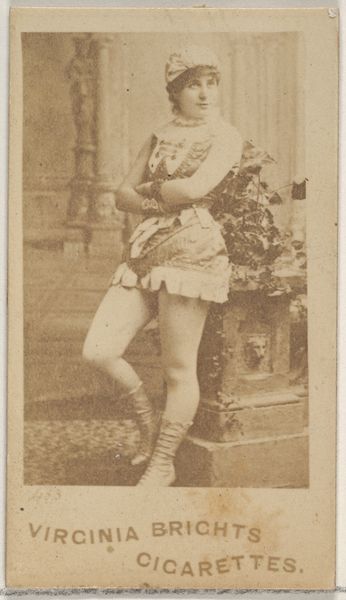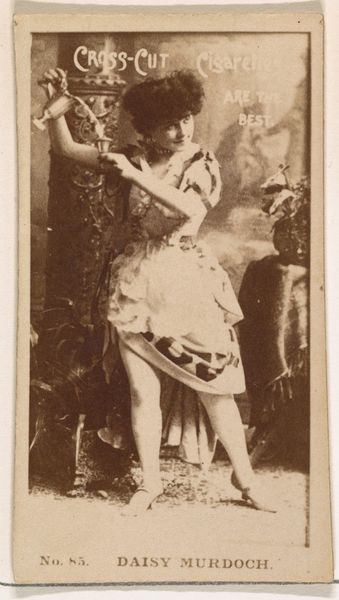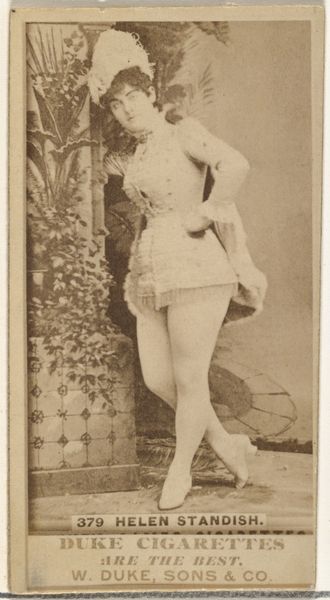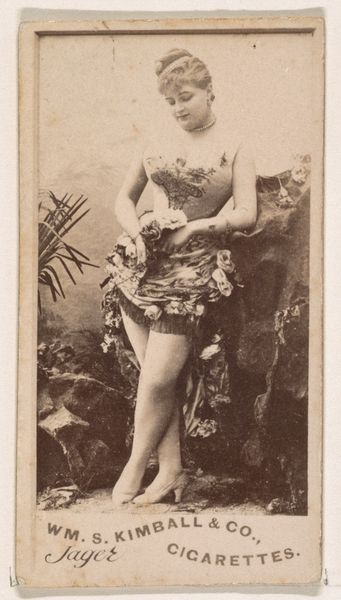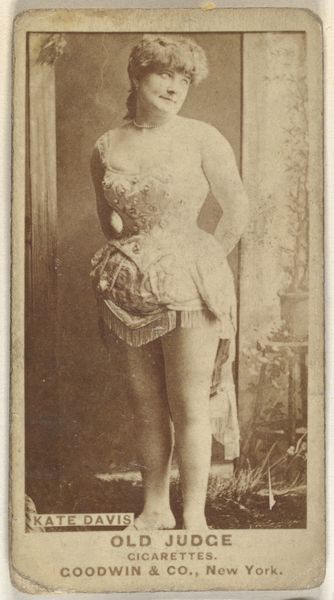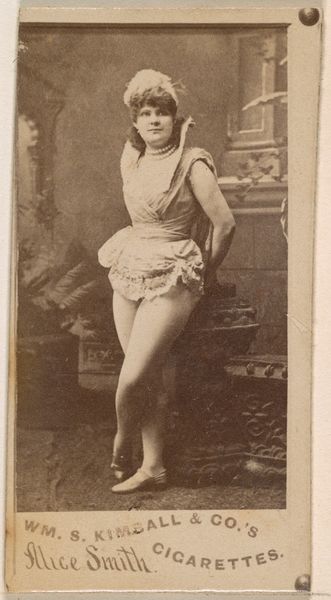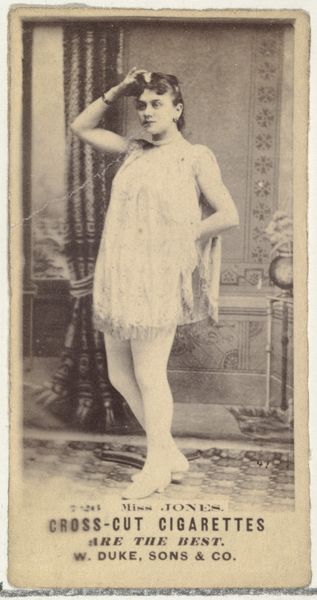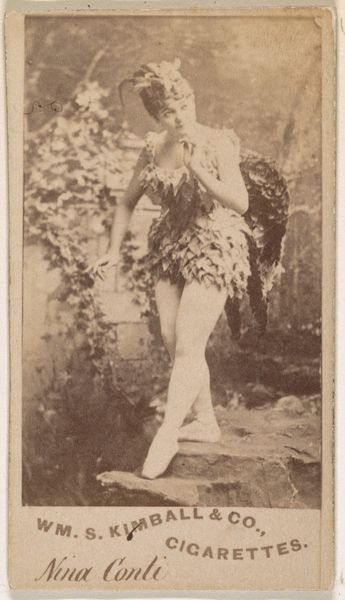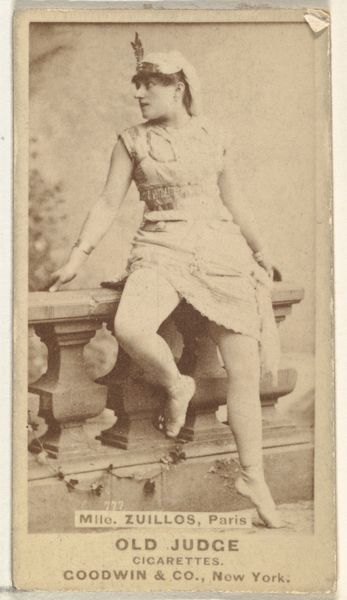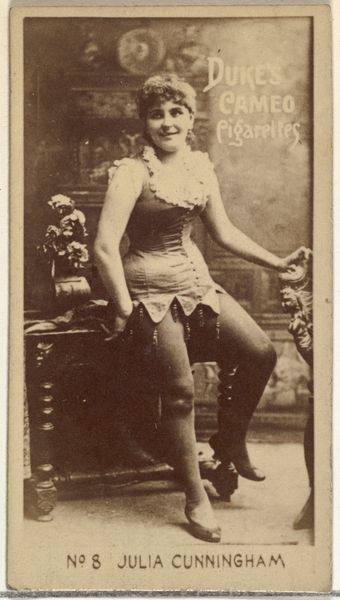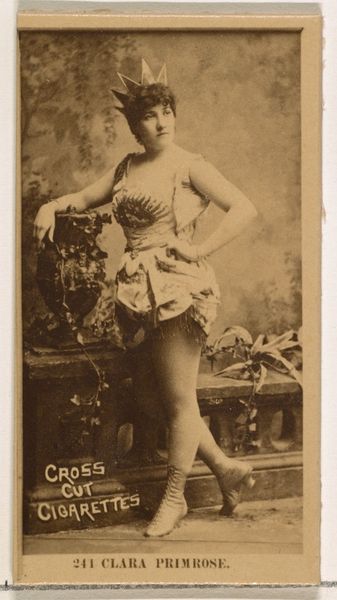
Card Number 218, Irene Currance, from the Actors and Actresses series (N145-5) issued by Duke Sons & Co. to promote Cameo Cigarettes 1880s
0:00
0:00
Dimensions: Sheet: 2 11/16 × 1 3/8 in. (6.8 × 3.5 cm)
Copyright: Public Domain
Curator: Let's consider "Card Number 218, Irene Currance" from the Actors and Actresses series, made by Duke Sons & Co. in the 1880s. It's a fascinating blend of photography, drawing and printmaking. What are your first impressions? Editor: Well, the sepia tone gives it such a vintage feel, and the subject's pose seems both elegant and a bit staged. It has an old timey aura. How do you approach this type of portrait card? Curator: Formally, I’m interested in how the artist employs contrasts: the softness of Irene Currance's attire versus the hard lines of the stone pillar, for instance. Or consider the contrast of texture between her frilly hairpiece, costume, and the smoother textures of her skin. Notice how these structural juxtapositions create visual interest and guide the viewer's eye. Does this photograph create formal relations between foreground and background? Editor: Yes, the pillar acts almost like a frame, directing our focus towards her, but the background itself is quite indistinct. Would you say the composition suggests anything about the role of portraiture itself at that time? Curator: Indeed. The lack of background detail actually isolates her, transforming her into a stylized representation rather than an individual. The photograph is less concerned with revealing Currance's personality. Instead, attention is directed toward line, texture and form. Where do you feel the framing focuses our viewing? Editor: That makes sense. I see the way her gaze meets ours too— it's an acknowledgement, but it's the outfit and pose which makes it such a fascinating image. The gaze anchors me, as viewer. Curator: Precisely. That, in conjunction with its inherent geometry and delicate tonal range make it much more compelling to me as a viewer than say, an attempt at hyperrealism. A play with shapes that alludes to, rather than concretely signifies a specific person. I’ve not considered those qualities before. Editor: It seems so simple on first viewing, but seeing the interplay of formal elements really opens it up.
Comments
No comments
Be the first to comment and join the conversation on the ultimate creative platform.
